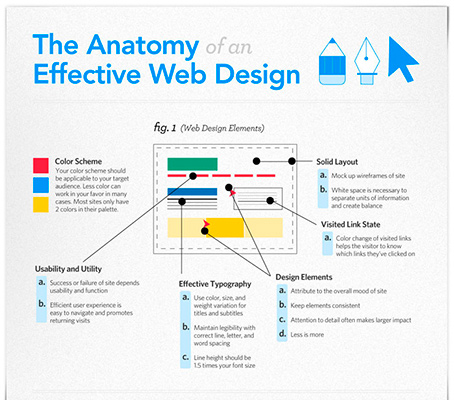Interested In Learning Just How Web Site Style Has Developed Throughout The Years? Discover The Journey From Basic, Simple Styles To User-Centric Interfaces That Prioritize The Visitor'S Experience
Interested In Learning Just How Web Site Style Has Developed Throughout The Years? Discover The Journey From Basic, Simple Styles To User-Centric Interfaces That Prioritize The Visitor'S Experience
Blog Article
Web Content Author-Johansen Vangsgaard
In the past, web sites were easy and concentrated on info. Navigation was straight, and design was for desktop computers. Currently, user experience is vital. Information overviews designs for easy navigating. read this post here suit different tools. https://email-marketing-automatio40628.blog-kids.com/30055679/are-you-looking-to-improve-exactly-how-your-website-appears-online-discover-specialized-strategies-in-web-design-that-can-elevate-your-internet-site-s-performance , dark setting minimizes pressure, and minimalist food selections boost navigation. Interactive features involve customers, and vibrant visuals stand apart. AI integration boosts interaction. See just how style has actually evolved to improve your on the internet journey.
Very Early Days of Website Design
In the early days of web design, simpleness reigned supreme. Sites were fundamental, with minimal colors, fonts, and layouts. The focus got on offering info rather than flashy visuals. Individuals accessed the net via slow-moving dial-up links, so rate and performance were crucial.
Navigation food selections were straightforward, typically situated on top or side of the web page. Internet sites were made for desktop, as mobile browsing wasn't yet common. Material was king, and designers focused on easy readability over complicated layout aspects.
HTML was the main coding language made use of, and designers needed to work within its restraints. Animations and interactive functions were marginal contrasted to today's requirements. Internet sites were fixed, with little dynamic material or personalized individual experiences.
Surge of User-Focused Design
With the development of web site layout, a change towards user-focused design principles has ended up being significantly popular. Today, developing sites that prioritize customer experience is vital for engaging visitors and attaining service goals. User-focused style involves recognizing the needs, preferences, and habits of your target audience to customize the website's design, content, and features as necessary.
Designers now conduct complete study, such as individual surveys and functionality screening, to gather insights and responses directly from customers. This data-driven approach assists in producing user-friendly navigation, clear calls-to-action, and aesthetically attractive user interfaces that reverberate with visitors. By placing the customer at the facility of the layout procedure, internet sites can deliver a more tailored and delightful experience.
Receptive layout has also become a crucial aspect of user-focused design, making certain that internet sites are enhanced for different tools and display dimensions. This flexibility enhances access and functionality, accommodating the varied ways individuals interact with internet sites today. Essentially, the increase of user-focused design indicates a shift towards producing digital experiences that focus on the requirements and assumptions of the end individual.
Modern Trends in Website Design
Check out the current patterns shaping web design today. One famous fad is dark setting style, providing a smooth and modern look while minimizing eye pressure in low-light environments. Another key fad is minimal navigating, simplifying food selections and improving customer experience by concentrating on essential elements. Integrating micro-interactions, such as computer animated buttons or scrolling impacts, can develop an extra interesting and interactive internet site. Receptive layout continues to be vital, guaranteeing smooth customer experiences throughout various gadgets. Furthermore, making use of strong typography and unbalanced designs can include visual passion and draw attention to certain web content.
Incorporating AI modern technology, like chatbots for consumer support or personalized referrals, boosts customer engagement and enhances procedures. Availability has likewise come to be a substantial fad, with designers prioritizing inclusive style techniques to satisfy diverse customer requirements. Welcoming sustainability by maximizing site performance for rate and efficiency is another emerging trend in web design. Collaborating with individual comments and data analytics to repeat and enhance design constantly is crucial for remaining pertinent in the ever-evolving electronic landscape. By accepting these modern fads, you can create a visually appealing, straightforward site that resonates with your target market.
Verdict
As you reflect on the development of website style from the early days to now, you can see exactly how user-focused design has actually come to be the driving pressure behind contemporary patterns.
Welcome the trip of modification and adjustment in website design, constantly keeping the customer experience at the forefront.
Keep existing with the current patterns and technologies, and never ever quit evolving your approach to produce visually spectacular and easy to use sites.
Evolve, adapt, and develop - the future of website design is in your hands.
